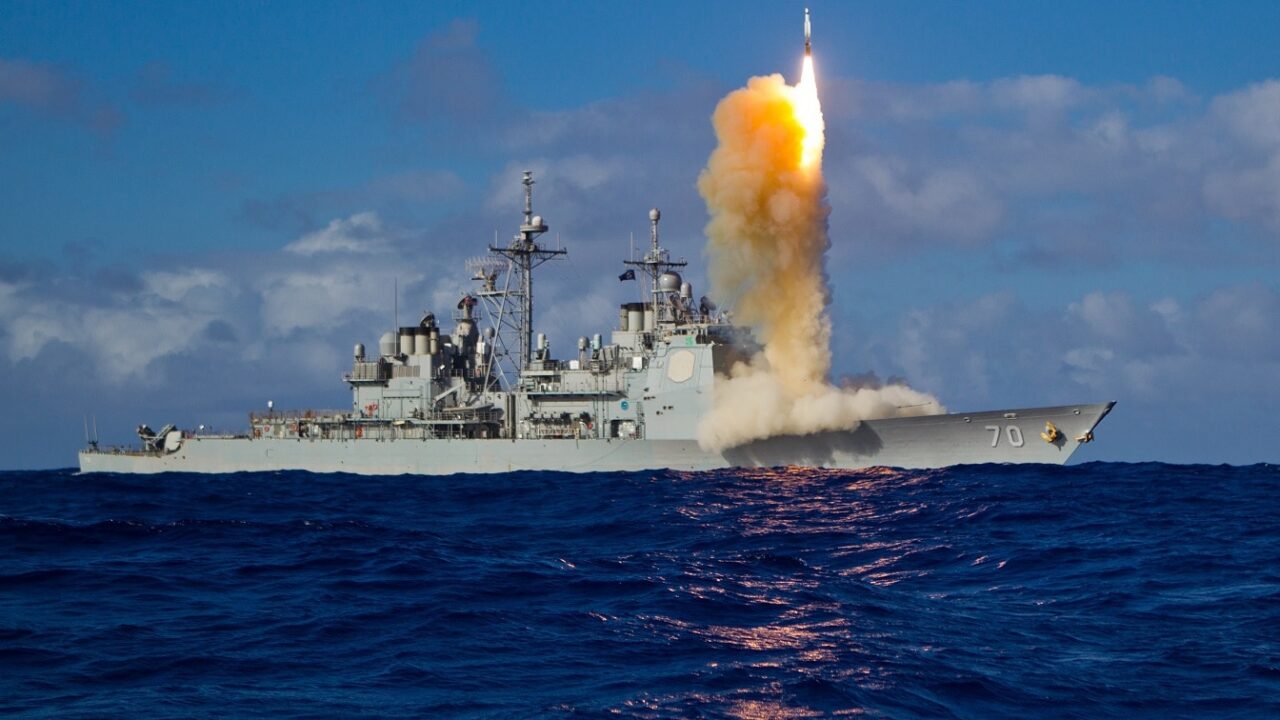The U.S. Navy’s ship-launched Standard Missile-3 has a distinguished and significant history firing from vertical launch systems on destroyers and cruisers.
But a specific kind of progress in recent years places the weapon in an entirely new paradigm.
SM-3: The ICBM Stopper
The newest SM-3 variant, Block IIA, has shown it can actually play a role in taking down enemy intercontinental ballistic missiles.
It can do so by being thrust just beyond the boundary of the Earth’s atmosphere, where it can take out an ICBM just as the missile finishes its mid-course phase and descends into a terminal phase within the atmosphere.
This is incredibly significant and a historic breakthrough that was first confirmed during a test in 2020.
SM-3s are exo-atmospheric interceptor missiles designed to destroy incoming short- and intermediate-range ballistic missiles as they approach the boundaries of the Earth’s atmosphere while traveling from space. They have for many years proven effective against short-, medium-, and long-range ballistic missiles.
The SM-3 IIA is the first variant to show an ability to destroy ICBMs traveling through space.
SM-3 missiles are launched both from vertical launch tubes on Navy ships, and from land-based Aegis Ashore systems. They can travel beyond the roughly 60-mile limit of the Earth’s atmosphere. Until now, however, SM-3s were not generally thought of as a weapon able to intercept or destroy larger, faster, space-traveling ICBMs. But the SM-3 IIA itself is larger and more precise than previous variants, and it has a longer range.
The SM-3 is a kinetic energy warhead able to travel more than 600 miles per hour. It carries no explosive, but instead relies on the sheer force of impact and collision to destroy an enemy target. As well as being larger, the SM-3 IIA is a more accurate interceptor, as it uses a focal plane array and advanced computer processing to track and destroy threats higher up in the atmosphere. The weapon’s improved seeker also enables it to track objects from much greater distances.
There was an interesting write-up about the SM-3 IIAs as far back as 2016 in the Missile Defense Agency’s budget item analysis, explaining that the new interceptor is built with “doubled seeker capacity” and “more than tripled divert capability.” The budget justification also referred to the SM-3 IIAs “lightweight nosecose and advanced kinetic warhead,” which increase the speed, range, and precision of any missile intercept.
Not only are ICBMs obviously operating at much higher altitudes than short- or intermediate-range ballistic missiles, but they are much faster as well. Traveling as fast as 10,000 miles per hour in some cases, ICBMs present a harder target to hit, particularly if traveling with decoys and utilizing other countermeasures.
The thinking suggests that the SM-3 IIA’s size, range, speed, and sensor technology will enable it to collide with and destroy enemy ICBMs toward the beginning or end of their flight through space when they are closer to the boundary of the Earth’s atmosphere.
MORE: Is Russia’s Su-57 Felon Stealth Fighter a Total Bust?
MORE: Merkova: Israel Has A Super Tank
Kris Osborn is the Military Affairs Editor of 19FortyFive and President of Warrior Maven – Center for Military Modernization. Osborn previously served at the Pentagon as a Highly Qualified Expert with the Office of the Assistant Secretary of the Army—Acquisition, Logistics & Technology. Osborn has also worked as an anchor and on-air military specialist at national TV networks. He has appeared as a guest military expert on Fox News, MSNBC, The Military Channel, and The History Channel. He also has a Masters Degree in Comparative Literature from Columbia University.

